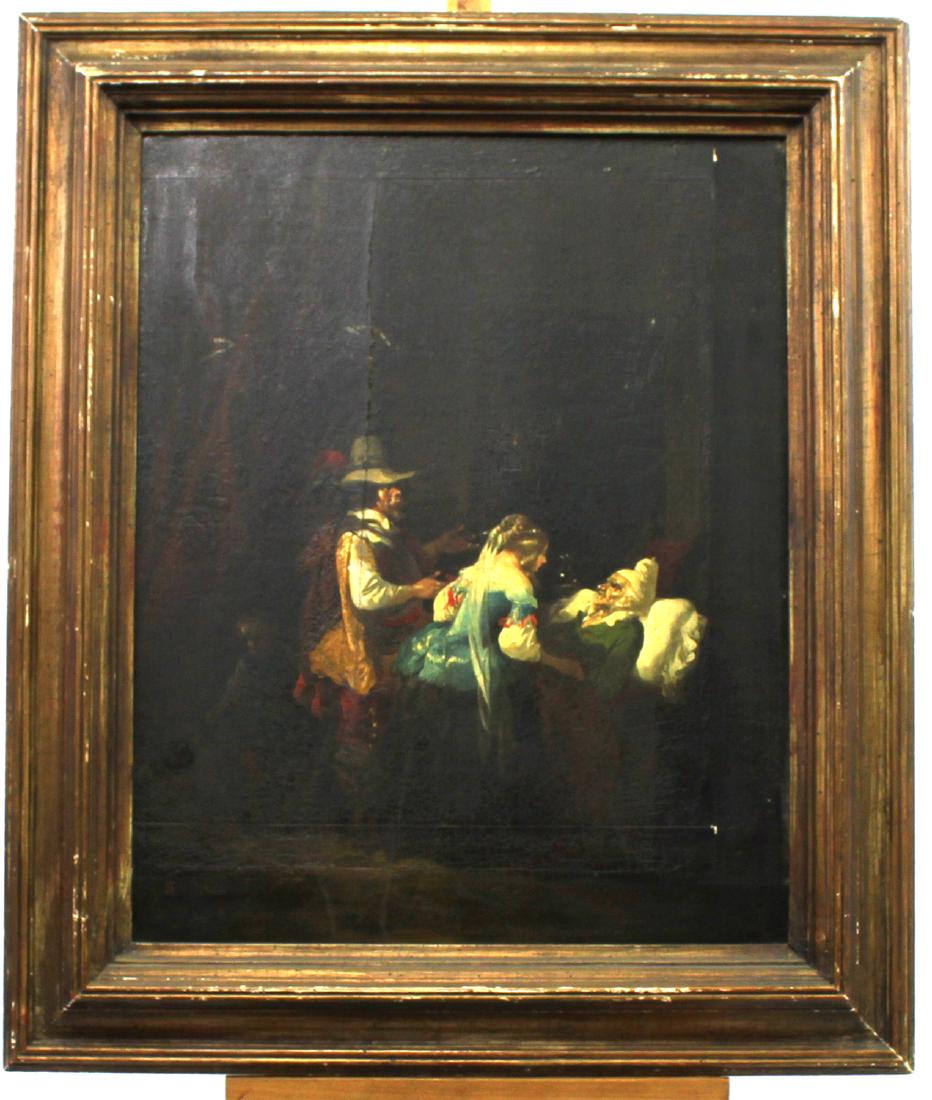

Classical modernity believed in the ability of the future to realize the promises of past and present – even after the death of God, even after the loss of faith in the immortality of the soul. "Hesitation with regard to the modern projects mainly has to do with a growing disbelief in their promises. It is easy to see why the laborious methods of tempera panel painting and fresco, both requiring elaborate planning at an early stage and militating against spontaneous revisions on the surface of the paint, fostered the rise of disegno in its practical sense of 'drawing' and its philosophical extensions, so crucial in the evolution of Italian art. An alternative method, called cangiante ( changeant in French), used different hues, such as, say, a dark red and a light yellow, for shadows and highlights, imitating the appearance of shot silk woven with yarns of different colours in the warp and weft. A mid-tone was made by mixing equal amounts of the colour prepared for the shadows with that for the highlights further intermediary tones could then be mixed from these three, and the pre-mixed shades would be systematically applied, beginning with the shadows and working through to the highlights, the initially sharp transitions softened by the intermeshing of the hatched brushstrokes.

In practice this meant that the pigment was at its purest and most saturated in the shadows for the highlights it was mixed with a high proportion of white. Since colours could not be blended and modelled on the surface of the painting, each tone from shadow to highlight had to be mixed and prepared in advance. (In workshop practice someone else, with a paint pot of a different colour, could then move in to paint, say, all the vermilion reds.) Tonal modelling of drapery also required the most meticulous planning. It seems likely therefore that in painting a panel the artist may have moved from colour to colour rather than concentrating on a single figure or scene – that is, painted all the blues, say, at one time across the whole panel. Once mixed with the egg the paint will begin to dry in its dish or pot in order to avoid wastage of sometimes expensive materials, the amount of pigment needed had to be assessed accurately before the paint was made. The necessary convention of tempera painting is thus to build up the paint film gradually with repeated lightly-touched hatchings or stipplings, not unlike those of drawing. These properties mean that, unlike oil paint, tempera can neither be applied in translucent glazes, nor thickly applied with textured impasto, nor blended and worked when wet, because the partially set paint will redissolve and peel away from the surface. The resulting paint is opaque and eventually dries to a waterproof film with a velvety sheen, the first stage in its drying being the rapid evaporation of the water, followed by the slow and gradual hardening of the egg proteins.

Tempera – In the history of art, the word is normally used to denote egg tempera, the type of paint favoured for Italian panel painting until the early 16th century it consists of pigments ground in water mixed with egg yolk or whole egg.


 0 kommentar(er)
0 kommentar(er)
